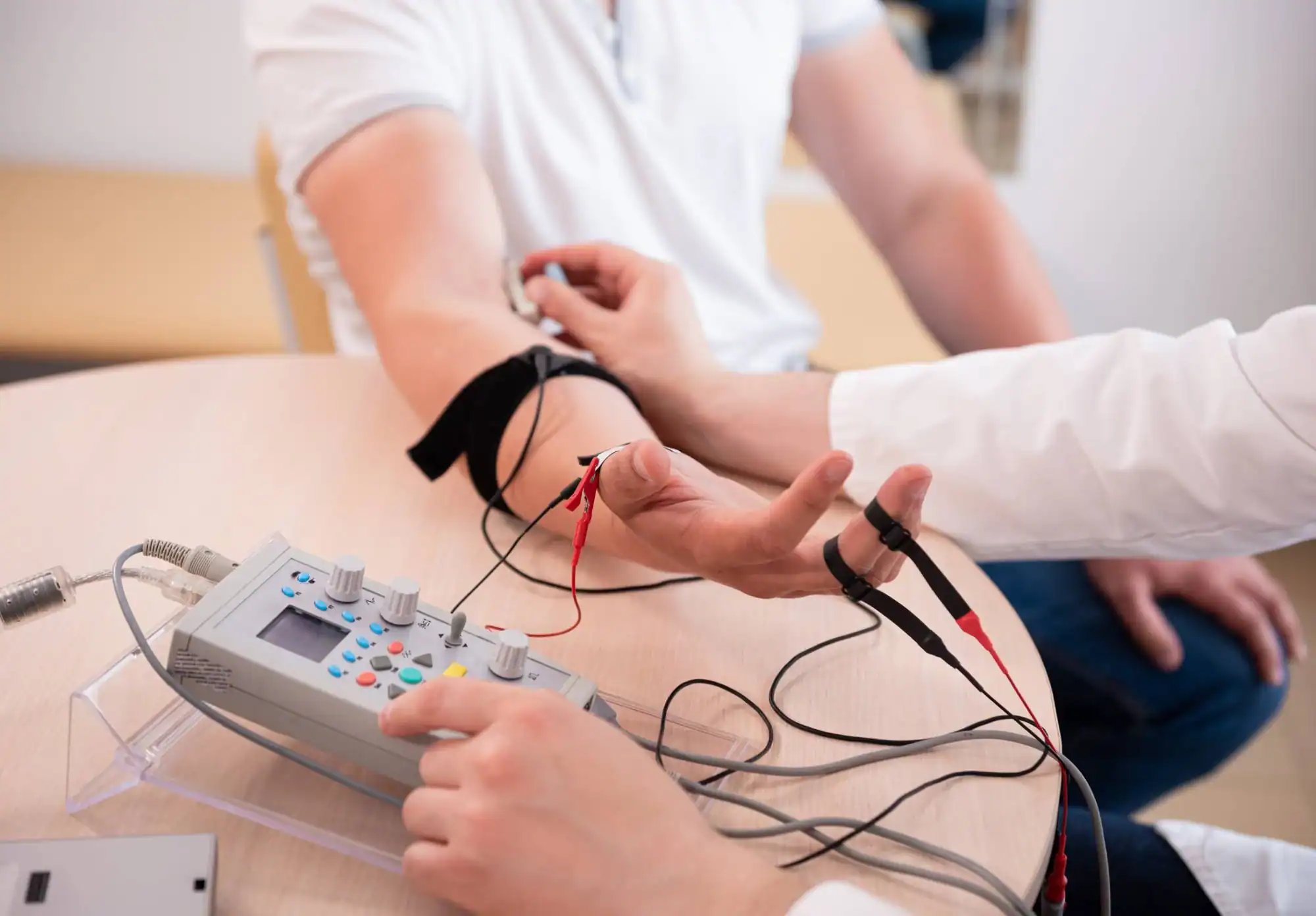Precise EMG testing reveals exactly what’s causing your numbness, tingling, or muscle weakness so you can move forward with confidence.
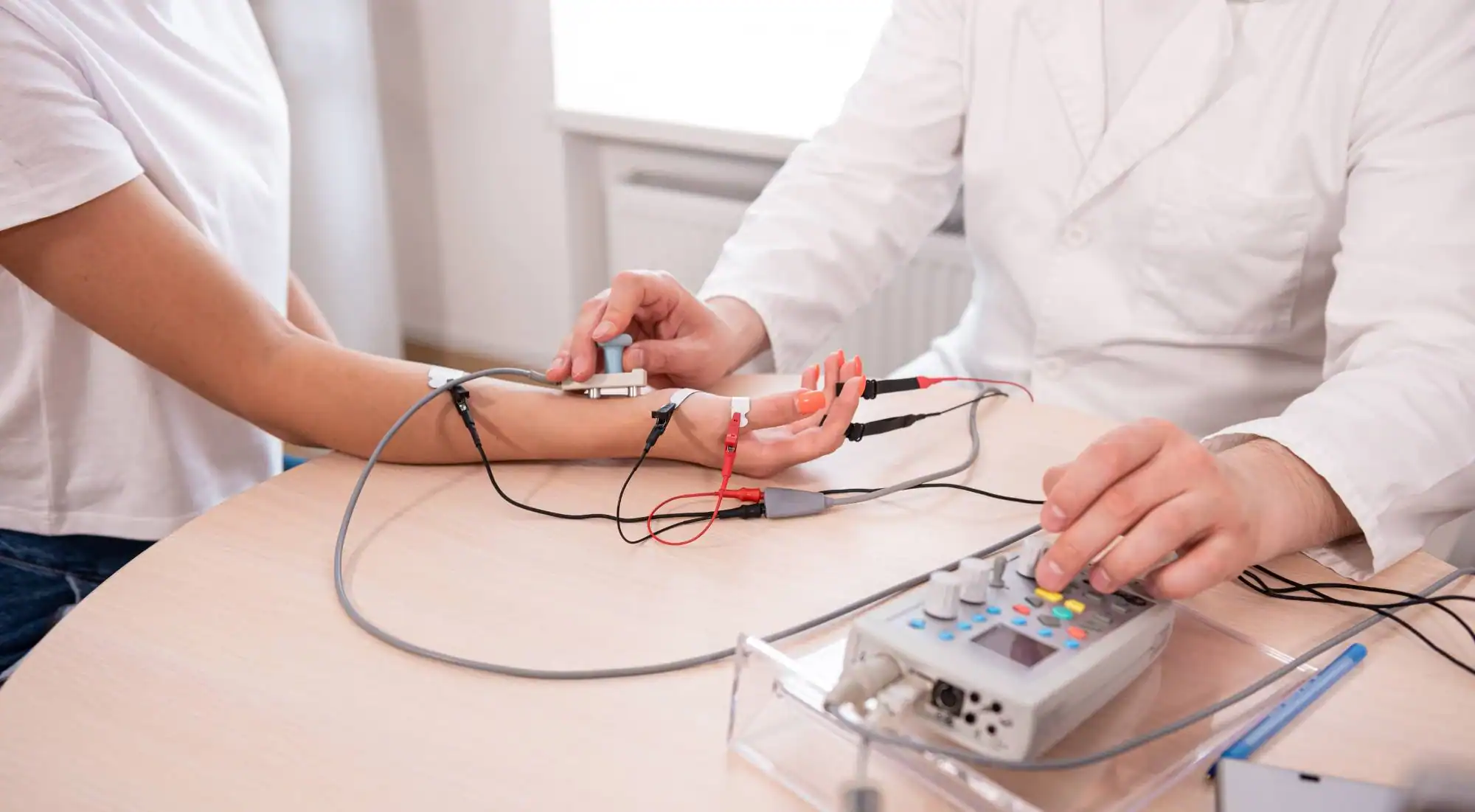
Reviews
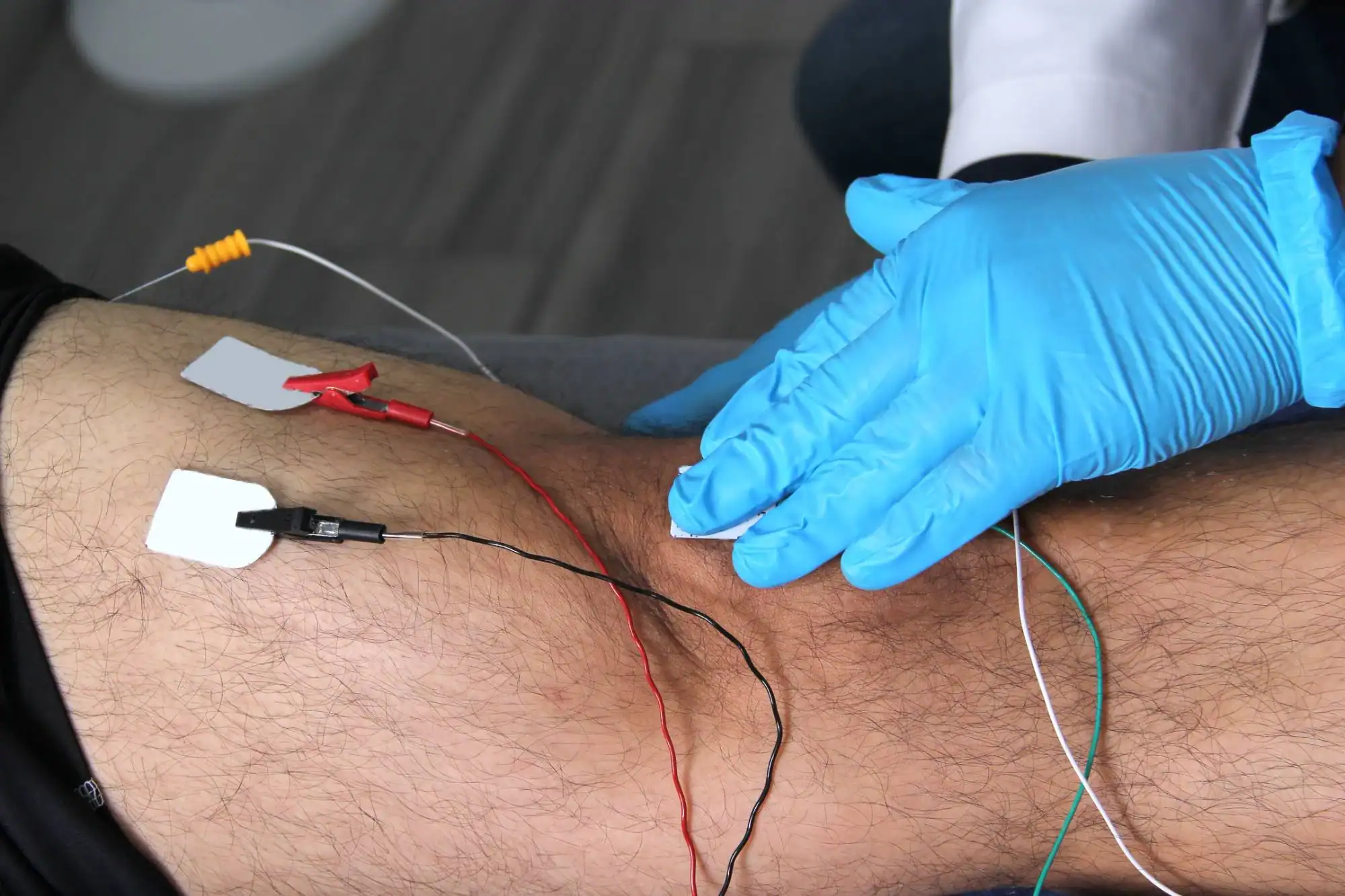
You’ve been dealing with symptoms that make simple tasks frustrating. Your hands feel numb during work. Your legs tingle when you walk. Maybe you’re dropping things or feeling weakness you can’t explain.
EMG testing gives you definitive answers. You’ll know if it’s carpal tunnel, a pinched nerve in your spine, diabetic neuropathy, or something else entirely. No more guessing or wondering if the problem will get worse.
With clear diagnostic results, your treatment becomes focused and effective. You’re not treating symptoms anymore – you’re addressing the actual source of the problem. That means better outcomes and faster relief.
We’ve been serving New Springville and Staten Island residents with specialized nerve testing for over a decade. Our physicians focus specifically on spine-related nerve disorders, which means we see cases like yours regularly.
We use current EMG equipment and follow established protocols that insurance companies recognize and accept. Our team includes board-certified specialists who understand how nerve symptoms connect to spinal conditions.
You’re not just getting a test – you’re getting an evaluation from doctors who specialize in exactly what you’re experiencing.
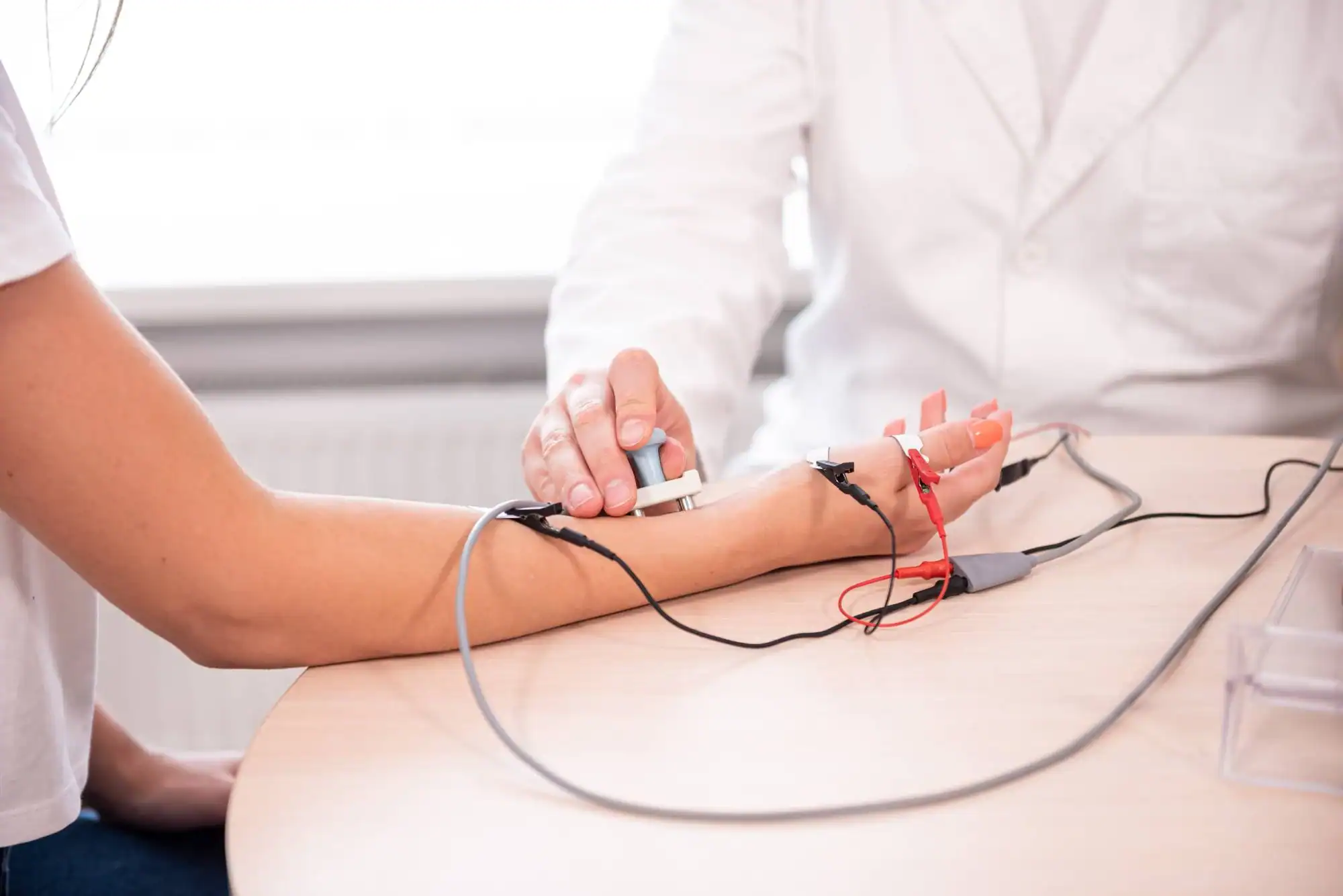
First, we’ll review your symptoms and medical history to understand what areas need testing. The EMG test itself has two parts: nerve conduction studies and electromyography.
During nerve conduction testing, small electrodes are placed on your skin. We send mild electrical pulses to measure how fast and strong your nerve signals are. This part takes about 20-30 minutes and feels like small taps or mild static.
The electromyography portion uses a thin needle electrode to measure electrical activity in your muscles. You’ll contract certain muscles while we record the signals. Most patients say it feels similar to getting blood drawn.
The entire process typically takes 45-60 minutes. You’ll get your results immediately, and we’ll explain what they mean for your specific situation and next steps.
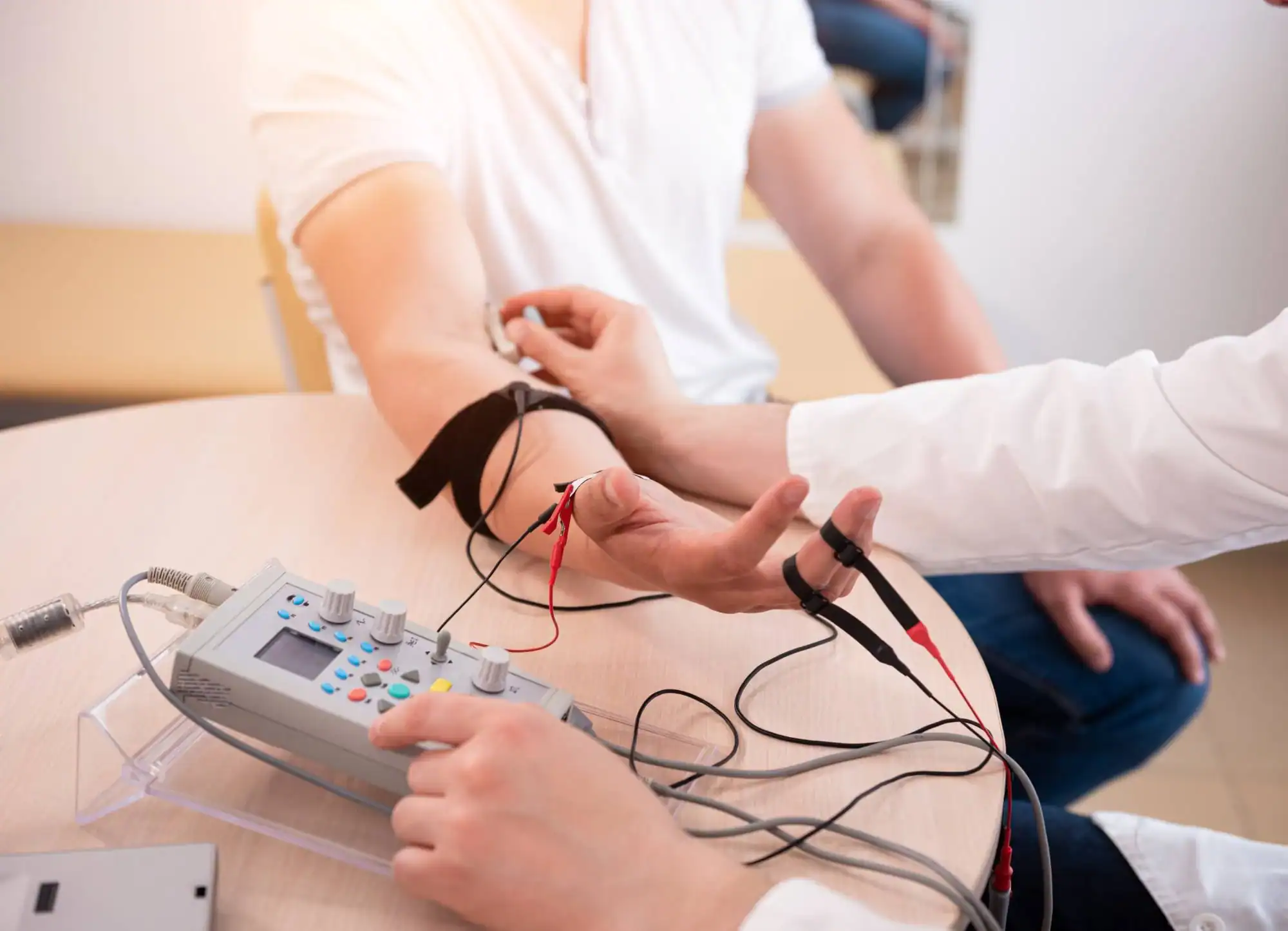
Ready to get started?
Your EMG testing includes both nerve conduction studies and electromyography to give a complete picture of what’s happening. We test multiple nerve pathways and muscle groups to identify exactly where problems exist.
Many New Springville patients come to us after their primary care doctor suspects carpal tunnel, sciatica, or other nerve issues. We can confirm these diagnoses or identify different problems that might be causing similar symptoms.
The testing covers common conditions like herniated discs affecting nerve roots, peripheral neuropathy from diabetes, and compression syndromes. We also detect less obvious issues like early nerve damage that hasn’t shown up on other tests yet.
You’ll leave with printed results and a clear explanation of findings, plus recommendations for treatment options that make sense for your specific diagnosis.
